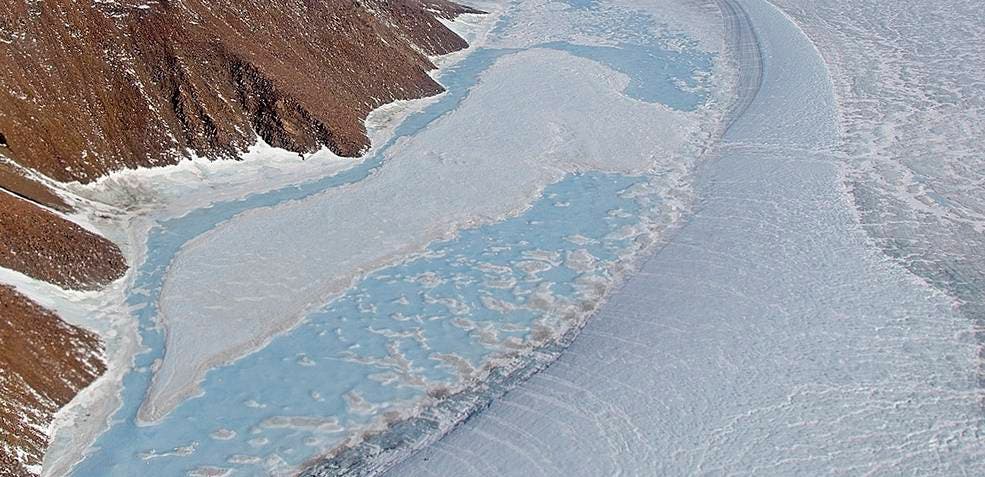New research suggests that the Greenland Ice Sheet is inching in towards a dangerous threshold: in around 600 years, it will melt enough that the sheet won’t ever recover, no matter what we do, and sea levels remain permanently higher. This scenario assumes that current rates of melt remain constant.

The team from the National Centre for Atmospheric Science and the University of Reading show that climate change is leading to an irreversible rise in the sea level alongside a declining Greenland ice sheet. Worse yet, this sheet is closing in on a point of no return, past which it will never fully regrow — leaving a permanent mark on the global sea level.
Big Ice, Big Loss
The Greenland ice sheet is roughly three times the size of Texas and stores an important quantity of Earth’s frozen water. Under current melting rates, it contributes around 1mm of sea level rise per year (around one-quarter, 25%, of the total increase). It’s estimated that it lost a total of three-and-a-half trillion tonnes of ice since 2003, even with seasonal growth periods factored in.
Needless to say, that’s a lot of water. Rising seas threaten all coastal areas around the world, and can affect potentially millions of people who live in low-lying areas.
If the current target of the Paris Agreement (keeping global warming from going above 2°C compared to pre-industrial temperatures) is not met, we should expect the sea level to rise by several meters and significant ice loss, the authors note. Both would last for tens of thousands of years, and the worse global warming gets, the more dramatic these shifts would be.
The current paper shows that even if temperatures are brought back under control at a later time, the Greenland ice sheet will never fully regrow after it passes its critical threshold. If that point is passed, the sea level would permanently rise by at least 2 meters (with other sources adding to that figure).
Being so large, the sheet has a significant cooling effect on its local climate. In essence, there’s so much ice in Greenland that it’s making Greenland colder and more icy — not a bad trick. But if the sheet declines, local temperatures would increase, which increases melting rates, and snowfall levels would drop dramatically, which would slow down the formation of ice. The team estimates that if the Greenland ice sheet retreats from the northern part of Greenland, that area would remain permanently ice-free. All in all, we have around 600 years before that threshold is passed, the team estimates based on data from the Fifth Assessment Report of the Intergovernmental Panel on Climate Change.
The team simulated the effects of the Greenland ice sheet melting under a range of scenarios, from minimal warming to worst-case conditions. All scenarios led to a decline in size of the sheet and contributed to rising sea levels to one extent or another.
So what’s to be done? Well we need to stop and then reverse climate warming before that threshold is reached.
“Our experiments underline the importance of mitigating global temperature rise. To avoid partially irreversible loss of the ice sheet, climate change must be reversed — not just stabilised — before we reach the critical point where the ice sheet has declined too far,” says Professor Jonathan Gregory, climate scientist from the National Centre for Atmospheric Science and University of Reading, a co-author of the paper.
There were some scenarios the team found where the ice sheet could be stabilized before reaching its point of no return. All of them, however, hinged on steps being taken ahead of time to reverse global warming.
The paper “Large and irreversible future decline of the Greenland ice sheet” has been published in the journal The Cryosphere.









